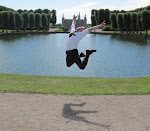
The following information on Thunder Bay is comprised of a few highlights freely adapted from Wikipedia:
European settlements in the region began in the late 1600s with a French fur trading outpost on the banks of the Kaministiquia River, more precisely in 1679 as Fort Caministigoyan. As the population grew the communities merged and in 1970 the twin cities of Fort William and Port Arthur together with the townships of Neebing and Mcintyre became Thunder Bay with a metropolitan population of 122,907.
The city takes its name from the immense bay at the head of Lake Superior, known on 18th century French maps as "Baie du Tonnerre". The city is often referred to as the Lakehead or Canadian Lakehead because of its location at the end of Great Lakes navigation.
The port of Thunder Bay forms an important link in the shipping of grain and other products from western Canada through the Great Lakes and the Saint Lawrence Seaway to the east coast. Forestry and manufacturing play important roles in the city's economy, but this is changing toward a "knowledge economy" based on medical research and education.
If the map below does not show on your computer, please copy/paste the link into your browser's address box in order to view it:
http://maps.google.dk/maps?hl=en&safe=off&q=thunder+bay&ie=UTF8&split=0&gl=dk&ei=4SyaStaZOpDd-QbcgZ2PBA&z=10&iwloc=A
Google map of Thunder Bay:
Google satellite image of Minnesota and Thunder Bay, Ontario:
The distance between Minneapolis, Minnesota and Thunder Bay, Ontario is 488 kilometers (303 miles).

 Current (August) temperatures in Thunder Bay range from an average high of 23 °Celsius (74 °Fahrenheit) to an average low of 10 °C (50° F) with record highs of 40 °C (105 °F) and record lows of -1 °C (30 °F).
Current (August) temperatures in Thunder Bay range from an average high of 23 °Celsius (74 °Fahrenheit) to an average low of 10 °C (50° F) with record highs of 40 °C (105 °F) and record lows of -1 °C (30 °F).



.jpg)

.jpg)









